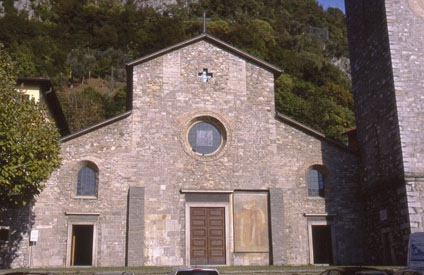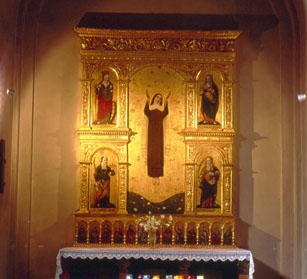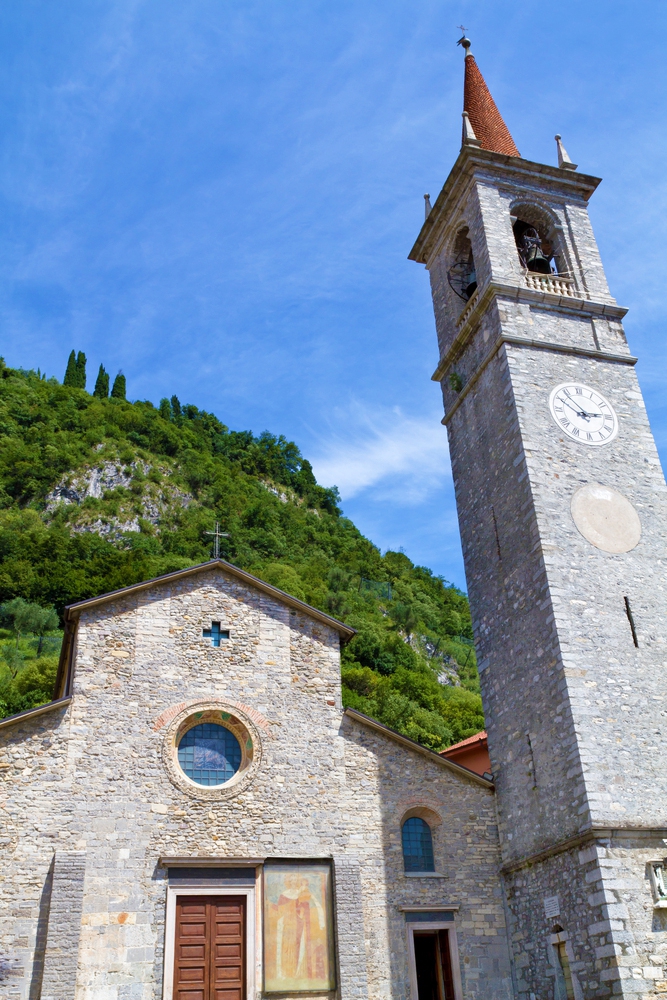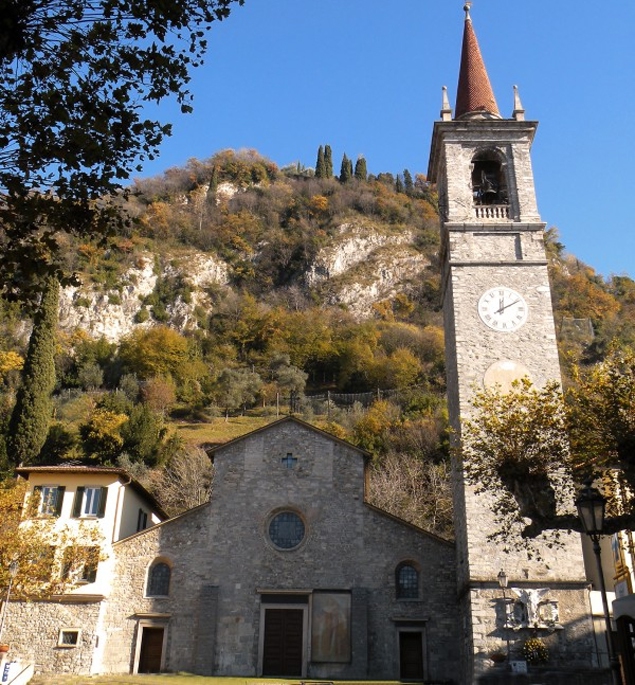-

San Giorgio -

San Giorgio -

San Giorgio -

San Giorgio -

San Giorgio -

San Giorgio -

San Giorgio
San Giorgio Varenna Like
San Giorgio: Description
Beautiful frescoes adorn the inside of the church: the portrayal of hell on the counter-façade; two figures on both the columns, probably representing Saint Gregory the Great and Queen Theodelinda; the symbolic representation of the four Evangelists on the left aisle of the third vault. The polyptych of Saint George painted by Jo Pietro Brentani in 1467 is a valuable example of Giotto’s art as well. It representing the Virgin on a throne while is offering a fruit to the Child standing on her knees, who is blessing. To the right of the Virgin is St. Peter martyr of Verona; to her left is St. George. Laterally are four Saints: St. Lawrence, St. John the Baptist, St. Stephen and St. Agnese. Above is the Crucifixion.
The altarpiece made by Sigismondo De’ Magistris, from Como, is dated back to the 1533. It representing the Lord kneeling on a rock which emerges from the Jordanian river, while St. John the Baptist pours some water on his head. The pedestal represents the Virgin who is keeping the Child in her own arms; two Angels and two Saints attend.
The Polyptich of the altar is a wooden composition made in the 1500, author unknown.
The Polyptich of the Saints, instead, is a very complex Altarpiece from the 1594, representing four Saints: St. Caterina d’Alessandria, St. Lucy, St. Mary Magdalene and St. Apollinia. Two others remarkable components are the altar as well as the statue of Madonna del Rosario , the first made of grey marble, the second made of golden wood.
The Confessional, made by Giovanni Albiolo from Bellagio, is dated back to the 1690. Four Caryatids are sculpted on it as well as the two small statues on the corners, representing King David and Elia the Prophet.
Before the sacristy is the stoned group of “Mercy” , known also as “Pity” , dated back to the end of the 15th century. It’s a stoned sculpture with the Virgin’s face in the middle and the Lord’s arms which longitudinal divide the painting. On the north wall we find the Baptister, a recess with a tank made of black marble from Varenna and a small wrought iron gate.
The Sacristy, instead, is from the half of the 18th century. The Belfry was completed in 1653. The massive shaft, standing on four pinnacles, seems a tower with natural stone at the corners.
More to Explore.
Lake Como's rich history of church building goes back many centuries. Their storied past includes miracles, political intrigue and competition for parishioner loyalty.